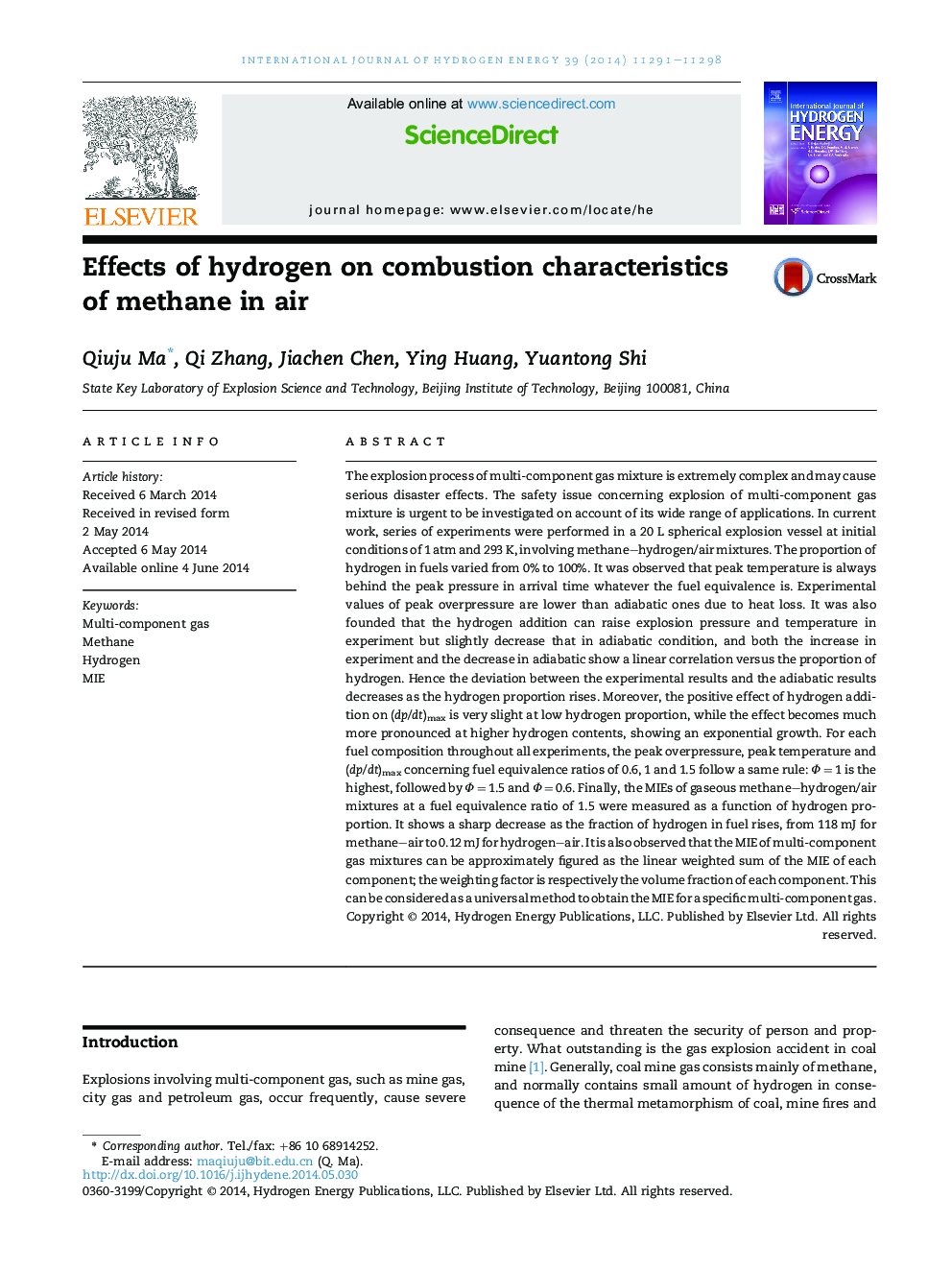| Article ID | Journal | Published Year | Pages | File Type |
|---|---|---|---|---|
| 1272270 | International Journal of Hydrogen Energy | 2014 | 8 Pages |
•Peak overpressure increases linearly with hydrogen addition.•(dp/dt)max increases exponentially with hydrogen addition.•MIE of multi-component gas can be simply calculated from formula MIE=∑[((MIE)i·xi)]MIE=∑[((MIE)i·xi)].
The explosion process of multi-component gas mixture is extremely complex and may cause serious disaster effects. The safety issue concerning explosion of multi-component gas mixture is urgent to be investigated on account of its wide range of applications. In current work, series of experiments were performed in a 20 L spherical explosion vessel at initial conditions of 1 atm and 293 K, involving methane–hydrogen/air mixtures. The proportion of hydrogen in fuels varied from 0% to 100%. It was observed that peak temperature is always behind the peak pressure in arrival time whatever the fuel equivalence is. Experimental values of peak overpressure are lower than adiabatic ones due to heat loss. It was also founded that the hydrogen addition can raise explosion pressure and temperature in experiment but slightly decrease that in adiabatic condition, and both the increase in experiment and the decrease in adiabatic show a linear correlation versus the proportion of hydrogen. Hence the deviation between the experimental results and the adiabatic results decreases as the hydrogen proportion rises. Moreover, the positive effect of hydrogen addition on (dp/dt)max is very slight at low hydrogen proportion, while the effect becomes much more pronounced at higher hydrogen contents, showing an exponential growth. For each fuel composition throughout all experiments, the peak overpressure, peak temperature and (dp/dt)max concerning fuel equivalence ratios of 0.6, 1 and 1.5 follow a same rule: Ф = 1 is the highest, followed by Ф = 1.5 and Ф = 0.6. Finally, the MIEs of gaseous methane–hydrogen/air mixtures at a fuel equivalence ratio of 1.5 were measured as a function of hydrogen proportion. It shows a sharp decrease as the fraction of hydrogen in fuel rises, from 118 mJ for methane–air to 0.12 mJ for hydrogen–air. It is also observed that the MIE of multi-component gas mixtures can be approximately figured as the linear weighted sum of the MIE of each component; the weighting factor is respectively the volume fraction of each component. This can be considered as a universal method to obtain the MIE for a specific multi-component gas.
